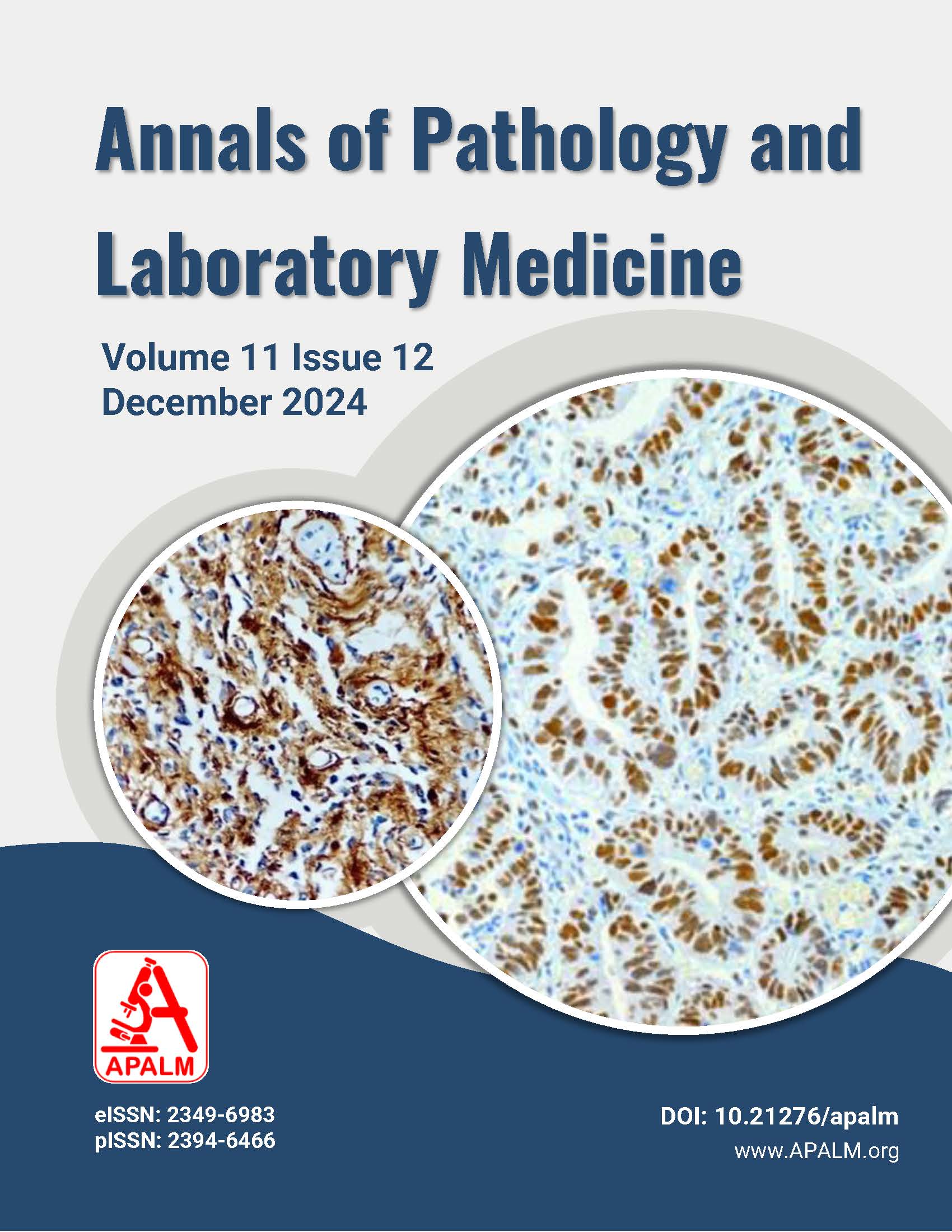Quality Control of Red Cell Concentrates: An Insight into the Effective Functioning of the Blood Centre
DOI:
https://doi.org/10.21276/apalm.3412Keywords:
Hematocrit, volume, quality control, red cell concentratesAbstract
Background: The global adoption of blood component therapy has led to the establishment of quality control programs in blood centers, ensuring the safety and efficacy of blood components. Quality control guarantees the availability of high-quality blood components, minimizing the risk of transfusion-related adverse events. As red cell concentrates are used daily in our blood center, evaluating their quality control processes is crucial. This study aimed to assess the quality control processes for red cell concentrates at our blood center.
Materials and Methods: A 5-year retrospective study was conducted at a blood center attached to a tertiary care hospital. Data was collected from 2019 to 2023. A total of 48,662 units of blood were collected during this period. Whole blood was subjected to component separation, and 46,930 units of red cell concentrates were prepared. Four units per month, or 1% of red cell concentrates prepared, were subjected to quality control as per the standard guidelines.
Results: The mean volume of red cell concentrates prepared from 350 ml and 450 ml whole blood without additive solution was 158.98 ml and 243.13 ml, respectively, whereas those prepared with additive solution were 241.79 ml and 314.46 ml, respectively. A total of 81.12% of red cell concentrates without additive solution met the quality standard (hematocrit 65–70%). Additionally, 86.69% of red cell concentrates with additive solution met the quality standard (hematocrit 50–60%).
Conclusion: Our study confirms that the quality of red cell concentrates meets standard guidelines. Routine quality control is essential to ensure efficacy, minimize transfusion risks, and drive manufacturing advancements.
References
1. Sultan S, Zaheer HA, Waheed U, Baig MA, Rehan A, Irfan SM. Internal quality control of blood products: an experience from a tertiary care hospital blood bank from Southern Pakistan. J Lab Physicians. 2018 Jan;10(1):64–7.
2. Directorate General of Health Services, Ministry of Health and Family Welfare. Technical manual of transfusion medicine. India; 2023.
3. Das SS, Biswas RN, Sardar TP, Safi M. An insight to the internal quality control of blood components separated using the latest whole blood collection and processing systems: experience from a tertiary care hospital blood transfusion service in Eastern India. Asian J Transfus Sci. 2022;16:194–200.
4. Rathore MA, Rathore MA, Mushtaq S, Hashmi IQJ, Hashmi AR, Hashmi KTK. Internal quality control of red cell concentrates in a regional blood center. Prof Med J. 2022 Apr 30;29(5):698–700.
5. Howard P. Basic & applied concepts of blood banking and transfusion practices. 5th ed. Missouri: Elsevier Limited; 2020. 311 p.
6. European Directorate for the Quality of Medicines & Healthcare. Guide for the preparation, use and quality assurance of blood components: recommendation no. R (95) 15. 20th ed. Strasbourg, France: Council of Europe; 2020.
7. Upadhyay S, Pangtey T. Quality analysis of blood component (PRBC and platelet concentrates): a study from a tertiary care teaching hospital of Kumaon region of Uttarakhand. J Evol Med Dent Sci. 2016 Mar 18;5(23):1210–2.
8. American Association of Blood Banking (AABB). Components from whole blood donations. Technical manual. 15th ed. 2005. p. 202.
9. Akhtar K, Arora R, Malik U, Parashar A, Ahmad M, Prasad S. Internal quality control in blood and component bank in a tertiary healthcare center in Northern India. IP J Diagn Pathol Oncol. 2021 Jun 28;6(2):115–8.
Downloads
Published
Issue
Section
License
Copyright (c) 2024 Aishawarya Shrikant Warke, Bhavana Bharambe, Mohasin Halgale, Saili Dhomane

This work is licensed under a Creative Commons Attribution 4.0 International License.
Authors who publish with this journal agree to the following terms:
- Authors retain copyright and grant the journal right of first publication with the work simultaneously licensed under a Creative Commons Attribution License that allows others to share the work with an acknowledgement of the work's authorship and initial publication in this journal.
- Authors are able to enter into separate, additional contractual arrangements for the non-exclusive distribution of the journal's published version of the work (e.g., post it to an institutional repository or publish it in a book), with an acknowledgement of its initial publication in this journal.
- Authors are permitted and encouraged to post their work online (e.g., in institutional repositories or on their website) prior to and during the submission process, as it can lead to productive exchanges, as well as earlier and greater citation of published work (See The Effect of Open Access at http://opcit.eprints.org/oacitation-biblio.html).










